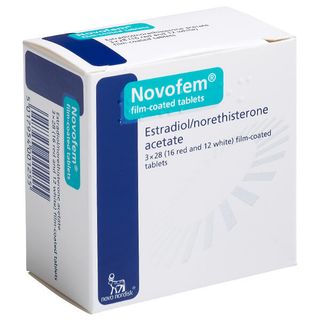Once you start reading about menopause, you may notice that there are a few different terms that are frequently used to describe this time of life, such as premenopause, perimenopause and postmenopause. Sometimes these terms seem to be used in the same way and it can get confusing knowing which parts of the menopausal transition these terms refer to — and when one stage ends and another begins.
Key Takeaway 1
Perimenopause typically begins in your forties, though some women notice changes in their thirties
Key Takeaway 2
The most common early signs include irregular periods, hot flushes and mood changes
Key Takeaway 3
HRT treatments can help manage perimenopausal symptoms effectively
In this article, we’ll be explaining exactly what “perimenopause” is. We’ll be looking at more detail at this stage of the menopause and what this term refers to, as well as the average perimenopause age and perimenopause symptoms you will typically experience during this time. We’ll also include some helpful links to treatments and guides along the way.
Read on to find out more about the signs of perimenopause and anything else you need to know.
For more information and guides on menopause, you can visit the menopause guides section of our website.

Evorel Sequi Patches
from£35.99
Evorel Sequi patches are a popular form of combined hormone replacement therapy (HRT), used to treat symptoms of menopause.
View TreatmentFree delivery over £40
What is perimenopause?
The term “perimenopause” means “around menopause”.
It refers to the transitional phase leading up to your final menstrual cycle, when your body undergoes a number of changes before your periods stop altogether.
What most people think of as “the menopause” is actually perimenopause. During this time — which generally lasts for around four years, but can last anywhere from a few months to multiple years — you will notice a number of menopause symptoms, including an irregular menstrual cycle and changes to your periods.
The perimenopause is over once you have not had a menstrual period for 12 months. This is when you have reached menopause. After this point, you are in the postmenopause stage of life, where you no longer have periods, your hormone levels have settled, and you will typically no longer experience the symptoms or changes of the last few years.
Sometimes people used the terms “premenopause” and “perimenopause” interchangeably. These don’t actually mean the same thing — premenopause refers to the time of life during which a woman can reproduce, has a menstrual cycle, and experiences no symptoms of menopause.
Perimenopause age: how old are you when perimenopause starts?
Perimenopause age varies from person to person.
The perimenopause generally begins during your forties, although some people may notice changes in their mid to late thirties, or, more unusually, their early fifties (the average age that menopause is reached in the UK is 51).
The average duration of perimenopause is around three to four years. However, this can differ between individuals, with perimenopausal symptoms lasting anywhere between a few months (though this is unusual) to as long as a decade.
In the section below, we’ll talk through the most common perimenopausal symptoms that you will experience during this time.
Perimenopause symptoms
It can be hard to recognise symptoms of perimenopause to start with — especially if you are in your mid-forties and you aren’t expecting them. Most people tend to expect hot flushes to arrive later in life, but they can actually appear quite early on.
Some people may find that the signs of perimenopause they experience are quite mild or subtle, while others may experience very severe and stressful. Symptoms can vary for everyone.
However, there are a number of perimenopause symptoms that most people experience during this time. We’ve listed some of the more common ones below.
Perimenopause periods: menstrual irregularities
One of the first signs of perimenopause you may notice is changes to your menstrual cycle.
When you enter into perimenopause, your menstrual cycle will become disrupted. You may find that your periods become more irregular — arriving early or late, and not following the pattern that they used to. You might also skip a month or more.
Your periods themselves may change — becoming lighter or heavier than usual due to your changing hormone levels. They may be shorter than normal, or last longer.
Perimenopausal bleeding outside of your “regular” period can also happen. This is known as “spotting”.
Perimenopause hot flushes
Hot flushes are a very common menopausal or perimenopausal symptom. We don’t know exactly why hot flushes happen, but it is linked to the hormonal changes that happen in the body at this time.
Hot flushes can make you feel very hot, flushed and sweaty, and can happen at night as well as in the day, causing night sweats.
Perimenopause anxiety
Anxiety is another common symptom of perimenopause. As with physical symptoms such as hot flushes, anxiety is caused by hormonal imbalance (which can cause all sorts of psychological symptoms).
Perimenopause anxiety is normal. However, if you are feeling severely anxious or panicky, or these feelings are going on for a long period of time, speak to your doctor.
Perimenopause headaches
Many women experience hormonal headaches in perimenopause, caused by changing hormone levels.
If you are someone who typically notices hormone-related headaches or migraines, then you may find that they increase in frequency or intensity during perimenopause.
You can find out more about hormonal headaches and migraines during menopause in our migraines and menopause guide.
Perimenopause bloating
Changing levels of oestrogen — especially high levels — during perimenopause can cause your body to retain water, which leads to bloating.
Perimenopause bloating can leave you feeling swollen or full in your stomach and abdominal area. You may also feel gassy, and suffer from symptoms like increased burping or flatulence.
Perimenopause weight gain
During perimenopause, you may notice some weight gain. Lower levels of oestrogen can cause perimenopause weight gain.
At this point in life, our metabolism also changes, which results in a loss of muscle mass and weight gain (particularly belly fat).
Perimenopause itching
Itching may sound like a weird perimenopause symptom, but it is a common one. Hormones like oestrogen help keep our skin hydrated, moisturised and healthy.
The dropping hormone levels in perimenopause can leave skin feeling dry and itchy (and also cause your skin to become thinner).
Perimenopause hair loss
You may notice that your hair starts to thin or not grow as much as it used to before perimenopause.
Fluctuating hormone levels are responsible for perimenopause hair loss. When oestrogen and progesterone levels in the body decline, hair growth slows down. Hair can also get thinner over time, and hair follicles start to shrink, which can cause hair loss.
You can find out more about perimenopausal and menopausal symptoms on our menopause symptoms guide.
When does perimenopause end?
Officially, perimenopause ends once you've gone through a year without having a menstrual period. This is when we say that you have reached menopause.
However, your menstrual cycle can be unpredictable and irregular for a long period of time, and aside from this, there aren’t really any clear signs perimenopause is ending.
Perimenopause is a gradual transition, and there isn’t a clear beginning and end to this chapter of your life.
You may notice that some symptoms and signs of perimenopause start to ease and calm down as your hormone levels settle.
Perimenopause treatments
Although perimenopause symptoms can be frustrating, there are lots of treatments that can help to manage and relieve them.
These treatments are called HRT — hormone replacement therapy. They work by replacing the lost hormones in the body during perimenopause, helping to effectively treat symptoms like the ones we’ve mentioned above.
We offer a number of different HRTs (in different forms and strengths) here at The Independent Pharmacy which may be prescribed for perimenopausal patients, including:
If you have just started perimenopause and you are not sure which is the best treatment for you, speak to your GP. They will be able to advise you further.
You can also visit our menopause HRT treatments page for further information on each treatment, or if you’d like to learn more about each type of HRT.
Alternatively, you can chat with one of our medical team at The Independent Pharmacy. Our team can offer expert advice and guidance about prescription HRT so that you can learn more about how they work and make a decision about which is right for you.





